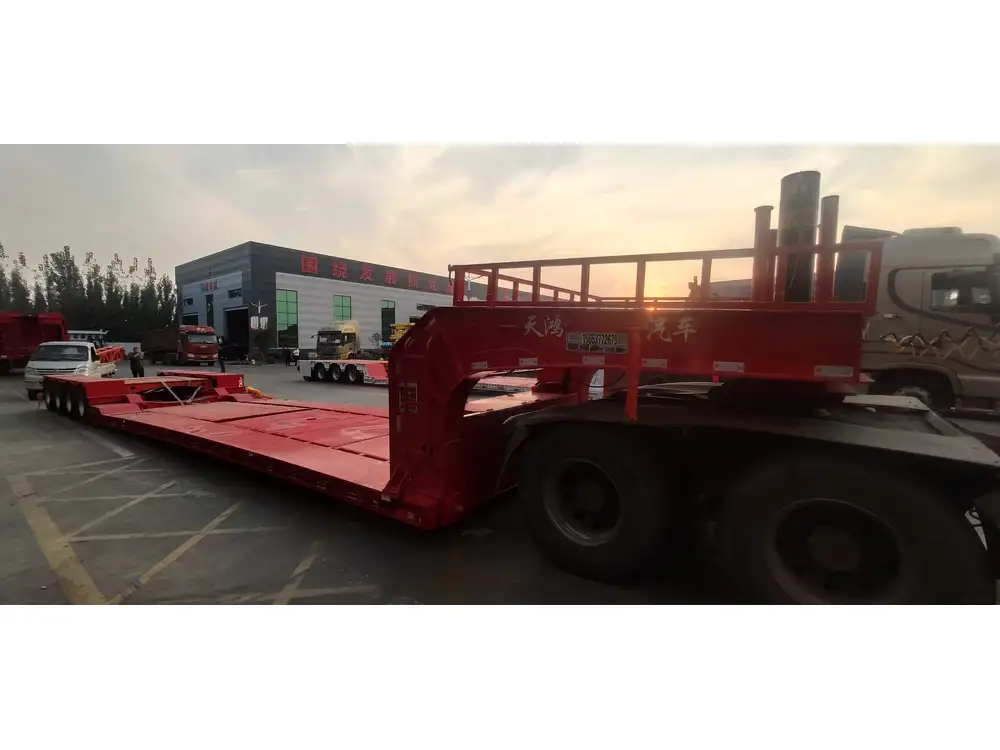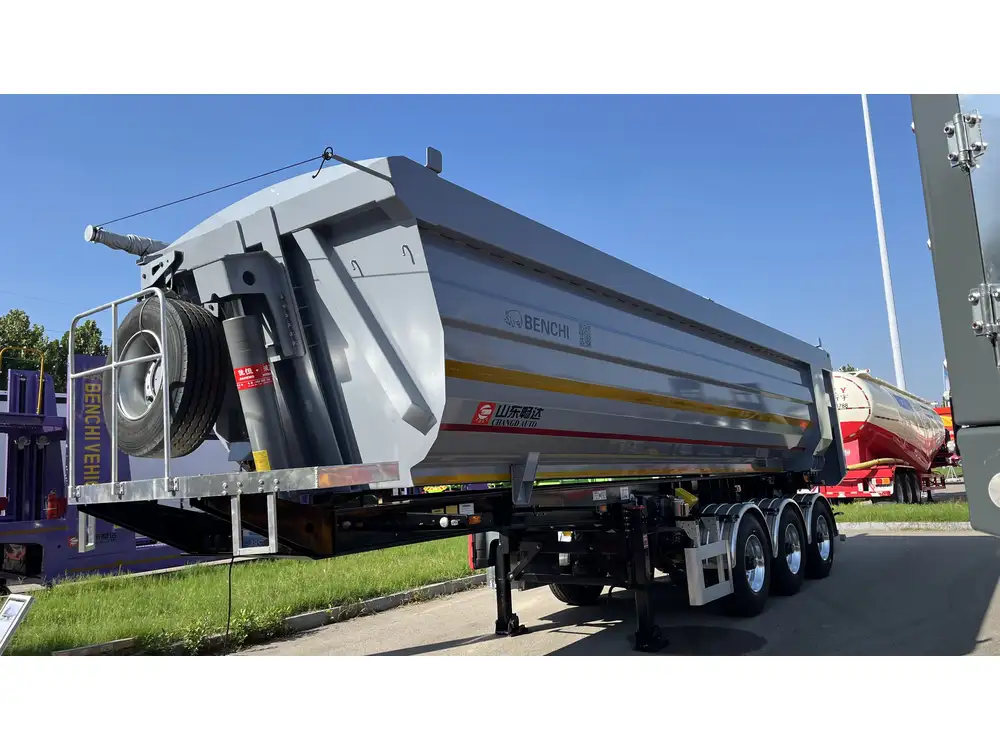Dump trailers play a vital role in various construction, landscaping, and agricultural projects. Understanding their capacity to hold dirt is crucial for maximizing efficiency and ensuring the success of your project. In this article, we explore the factors influencing the loading capacity of dump trailers and provide detailed insights to help you determine how many yards of dirt your specific trailer can hold.
Understanding Dump Trailers: An Overview
Dump trailers are specialized vehicles designed to transport bulk materials. They come equipped with hydraulic mechanisms that tilt the trailer bed, allowing material to be unloaded easily. Commonly used in construction and landscaping, these trailers can significantly reduce labor costs and time involved in transporting and dumping materials.
Different Types of Dump Trailers
Before diving into capacities, it’s essential to understand the different types of dump trailers available:
| Type of Dump Trailer | Description | Typical Capacity (Cubic Yards) |
|---|---|---|
| Single Axle | Lightweight, ideal for small loads | 5–10 cubic yards |
| Dual Axle | More robust, suitable for medium loads | 10–15 cubic yards |
| Tri-Axle | Designed for heavy-duty loads | 15–20+ cubic yards |
| Dump Truck Convoy | Combination of truck and trailer for extensive jobs | 20–30+ cubic yards |

How to Calculate the Capacity of a Dump Trailer
Calculating the capacity of a dump trailer is essential for ensuring it meets your hauling needs. The capacity is typically measured in cubic yards, which reflects how much dirt or material can be transported.
Factors Influencing Capacity
Trailer Dimensions: The internal dimensions of the trailer, specifically length, width, and height, directly determine how much material it can hold.
- Length: The length of the trailer bed affects volume.
- Width: The wider the bed, the more material it can carry.
- Height: Height adds to the cubic capacity, allowing more vertical storage.
Material Density: Different materials have varying densities. For instance, dry dirt is less dense compared to wet or compacted dirt, which affects how much can fit in the same space.
Construction: The design and construction of the trailer itself—whether it is made of lightweight materials or reinforced for heavy loads—can influence capacity.
Capacity Formula
To find out how many cubic yards your dump trailer can hold, use the following formula:
[ \text{Cubic Yards} = \frac{\text{Length (ft)} \times \text{Width (ft)} \times \text{Height (ft)}}{27} ]For example, if your trailer is 12 feet long, 6 feet wide, and 4 feet high:
[ \text{Cubic Yards} = \frac{12 \times 6 \times 4}{27} \approx 10.67 \text{ cubic yards} ]
Practical Example of Calculating Capacity
Consider a dump trailer with internal dimensions of 10 feet long, 5 feet wide, and 3 feet high.
[ \text{Cubic Yards} = \frac{10 \times 5 \times 3}{27} \approx 5.56 \text{ cubic yards} ]This calculation confirms that the trailer can adequately transport approximately 5.56 cubic yards of dirt.
Typical Capacity Ranges for Different Dump Trailer Types
Here’s a comprehensive look at standard capacity ranges for various dump trailer types:
Single Axle Dump Trailers
- Volume: 5 to 10 cubic yards
- Ideal Uses: Small landscaping jobs, residential clean-ups, and garden projects
- Example Scenarios:
- Transporting topsoil for a backyard garden
- Removing debris from a small home renovation

Dual Axle Dump Trailers
- Volume: 10 to 15 cubic yards
- Ideal Uses: Medium-sized construction and landscaping projects
- Example Scenarios:
- Delivering gravel for a new driveway
- Moving dirt for a medium-sized excavation project
Tri-Axle Dump Trailers
- Volume: 15 to 20+ cubic yards
- Ideal Uses: Heavy-duty construction and earthmoving projects
- Example Scenarios:
- Hauling aggregate for large-scale construction
- Excavating earth for foundations
Dump Truck Convoys
- Volume: 20 to 30+ cubic yards
- Ideal Uses: Industrial applications and extensive excavation projects
- Example Scenarios:
- Carrying soil for large commercial developments
- Transporting large quantities of fill material for grading

Common Miscalculations and Their Implications
Underestimating Material Density:
- Failing to account for moisture in dirt can lead to overflowing and potential legal liabilities in construction contracts.
Overloading the Trailer:
- Exceeding the recommended capacity not only risks vehicle damage but also poses severe safety hazards on the road.
Ignoring Weight Limits:
- Each dump trailer has a Gross Vehicle Weight Rating (GVWR) that limits the total weight it can legally carry. Always check this rating to ensure compliance with transportation regulations.
Tips for Maximizing Trailer Efficiency
- Prioritize Material Types: Knowing the density of the material being transported helps in determining how much can fit without overloading.
- Load Consistently: Ensure even weight distribution across the trailer to maintain balance and control during transit.
- Regular Maintenance: Perform regular checks and maintenance on hydraulic systems to ensure the trailer operates optimally.
Frequently Asked Questions (FAQs)

How Do I Know When My Dump Trailer is Full?
Most dump trailers are designed to handle a specific volume and weight. Observe the weight limits marked on the trailer, and use a combination of visual inspections and weight scales to determine if you’re at capacity.
What Is the Best Way to Load a Dump Trailer?
Ideally, load heavier materials toward the front of the trailer and distribute weight evenly across the axle. This helps in maintaining trailer stability both during loading and transit.
Can I Use a Dump Trailer for Wet Material?
Yes, dump trailers can handle wet materials; however, be cautious of their increased weight. Always calculate potential weight increases based on moisture content.

How Often Should I Service My Dump Trailer?
Routine checks—every 6 months or after heavy use—will help identify wear and tear before they lead to breakdowns.
Conclusion
Understanding the capacity of a dump trailer is essential for optimizing its use in various projects. By accurately calculating how many yards of dirt a dump trailer can hold and considering factors such as density, trailer dimensions, and load weight, contractors and DIY enthusiasts can maximize their efficiency while minimizing risks. Whether you are planning a residential landscaping project or a large-scale construction job, ensuring you choose the right type of dump trailer and fully understand its capacity will help drive your project to success.



